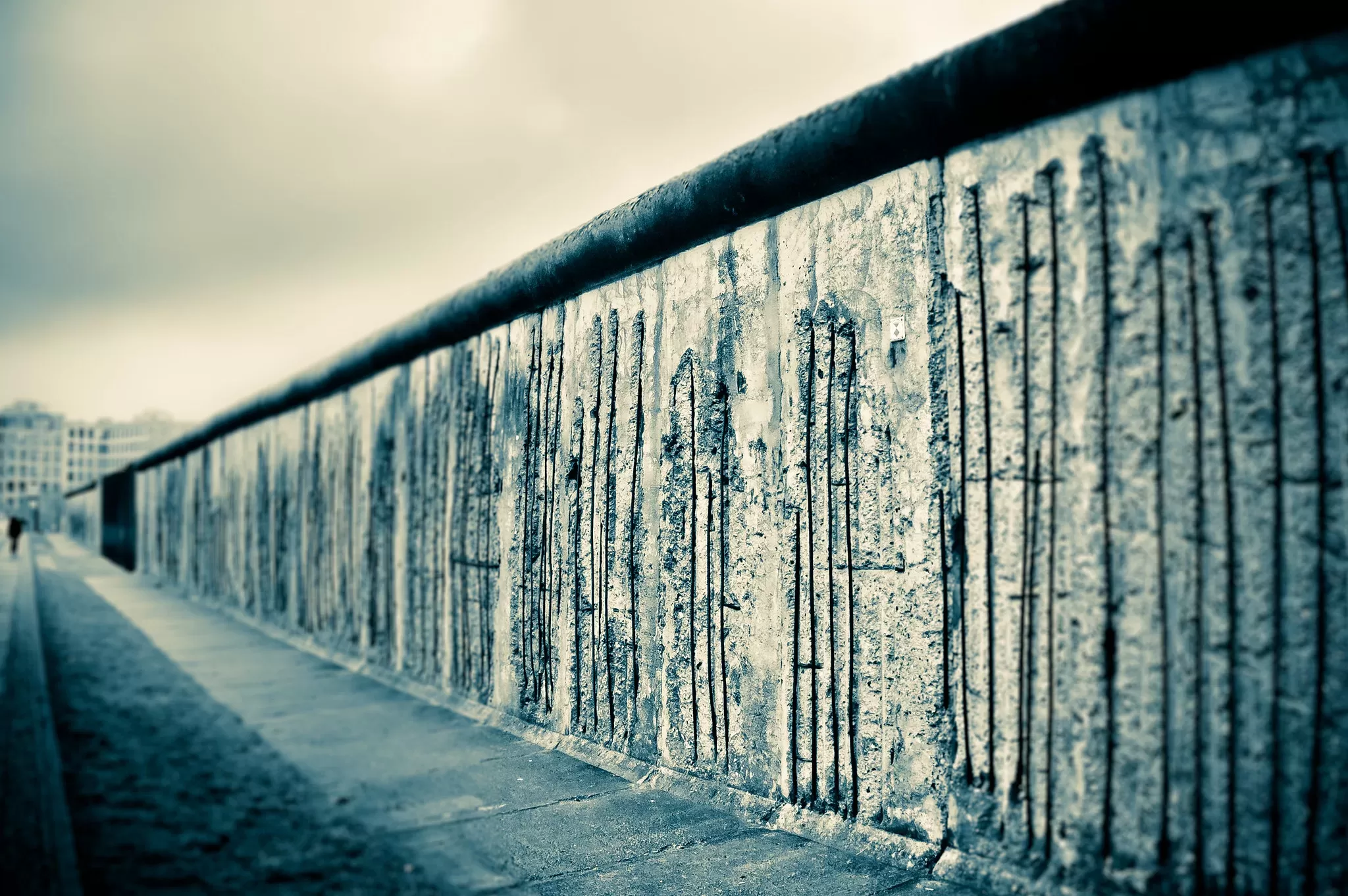Recently I went back to Berlin to visit an old friend. The German capital is a vibrant, international city known for its eclectic clubs and a willingness to accommodate all types of eccentricities and counterculture. Still, what remains of the Wall that once stretched for 97 miles across the German landscape remind us of a very recent and complicated past. The idea that an entire city can be split into two so quickly, with citizens losing part of their lives on the other side, is still hard to conceive.
Perhaps it’s a product of getting older that one starts becoming more interested in history. The fall of the Berlin Wall in 1989 might also be the first major international event that occurred in my lifetime. I have German friends who were there when the gates were left open on November 9th and the city was finally reunited again. The stories they tell are remarkable.
Following victory in World War II, Berlin was divided among the Allied powers. Tensions quickly rose between the Soviet Union, who imposed state-led communist rule in their occupation zone, and the Western nations, mostly consisting of the United States, the United Kingdom, and France. Due to better economic development and reconstruction efforts in the west, conditions between the two parts of the city soon vastly differed. As a result, 3.5 million East Germans defected to the west while it was still possible. To stop this, the first physical border was erected in 1952. Almost overnight a barb-wire fence appeared across the country. There are pictures of citizens on both sides shouting across to people that they might not have seen again until 1989, if at all. Initially, travel visas were permitted to allow some Eastern Germans to visit the west for a short period of time, but restrictions increased until the construction of the concrete wall in 1961.
While Krushchev was originally wary to building the Wall, fearing retaliation and perhaps military engagement from the US and the UK, the Allied powers did not respond. Instead, they took the Wall as a sign that the Soviet Union did not have ambitions to take over the entire city. West Germans protested the construction of the Wall to no avail, while on the other side East Germans faced imprisonment or death for opposing state control. Any East German attempting to get over the Wall was shot on site from the numerous guard towers. It is estimated that of the 100,000 Germans that attempted to circumvent the Wall in the 28 year period, only 5,000 made it, with a death toll of approximately 200 people. It’s hard to imagine so many people suddenly cut off from the life they had previously known.
It is no secret that these are tumultuous times for the dairy industry. The economies of scale have risen so radically and so quickly that a farm once considered notably large a decade ago now is having a hard time competing in the market. Farm income has been assessed to have dropped 50% since 2013, and many dairy farms are producing below the cost of production. The National Family Farm Coalition estimates that the United States has lost more than half of its farms in the last sixteen years. In Western New York, where I come from, it seems that every week another farm sells out.
For those experiencing it, it is impossible to underestimate what a drastic change it is to have to stop farming. Many of those farmers still live in their houses, surrounded by land that they used to plough, seed and mow, but now no longer work it. There’s a rhythm to running a family dairy farm, going from milking to feeding to fieldwork every day, and when that rhythm stops it does so abruptly and leaves a person dazed. Many farmers say that they farm because they can’t imagine doing anything else. Unfortunately, because of current conditions, some of them are having to figure out just what they can do that isn’t farming. They might see the barn from their kitchen window, but they have, in all essence, been cut off from it.
The Berlin Wall was a sign of something not going right in the world. It was the physical embodiment of political motivations being placed before the welfare of people, as well as a working monument to tyranny. Today the small stretch of the Wall that is left has been painted over with murals on the east side. Every day it is crowded with tourists trying to shove their way to a photo opportunity. In the airports one can even buy magnets that supposedly have a piece of the Wall on them. All of this, for better or worse, sanitizes the true horrors the Wall stood for and the lives that were affected. I hope those in office who make decisions that affect the dairy industry don’t forget or undervalue just how much life has been different for those who have had to quit farming.
This article is part of The Milk House Column series, published in print across three countries and two languages. It can also be found at themilkhouse.org.
This article appeared in a similar form in Progressive Dairyman.
(Cover Photo by Mike, https://bit.ly/3qe8WCO)

